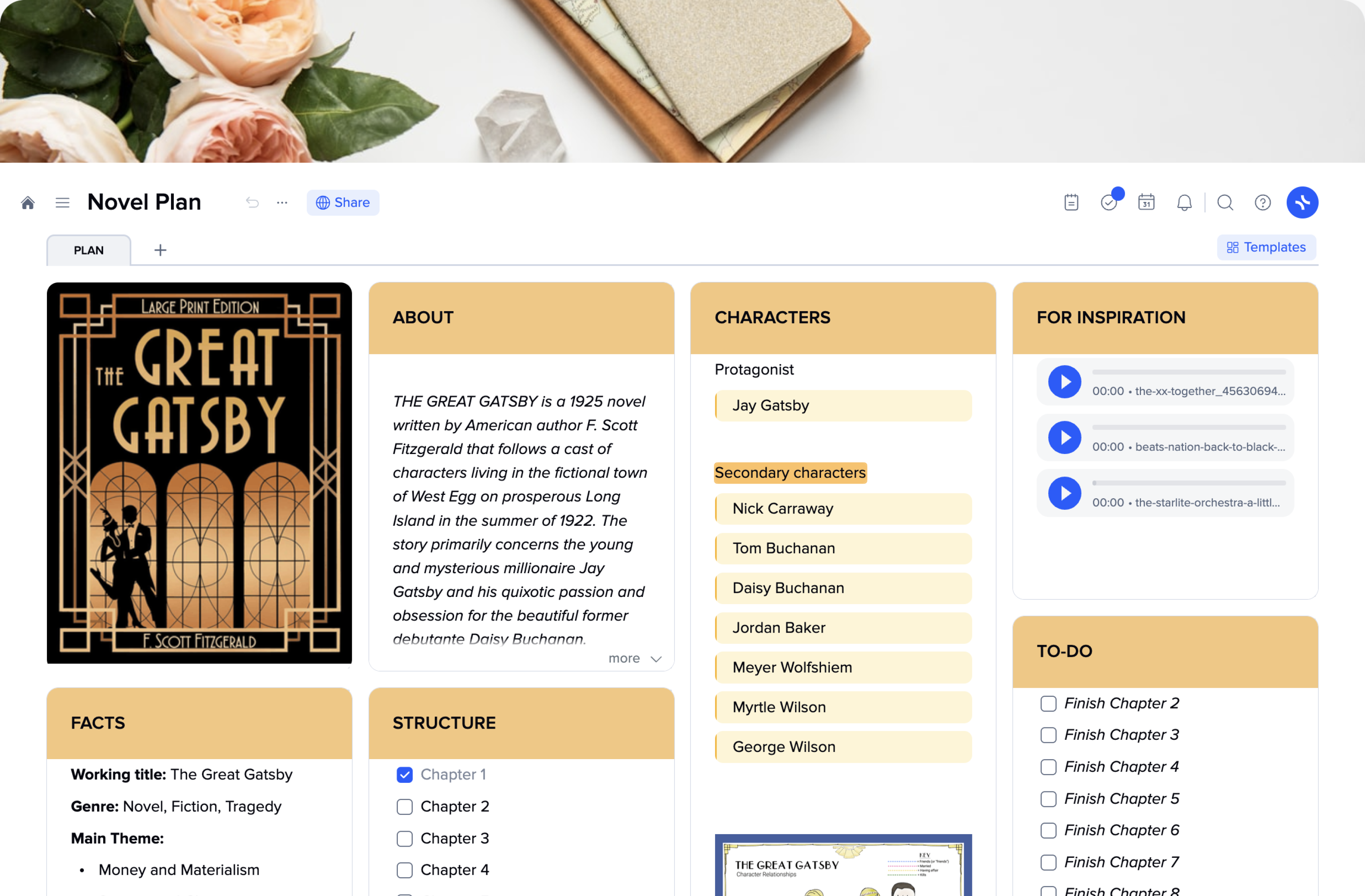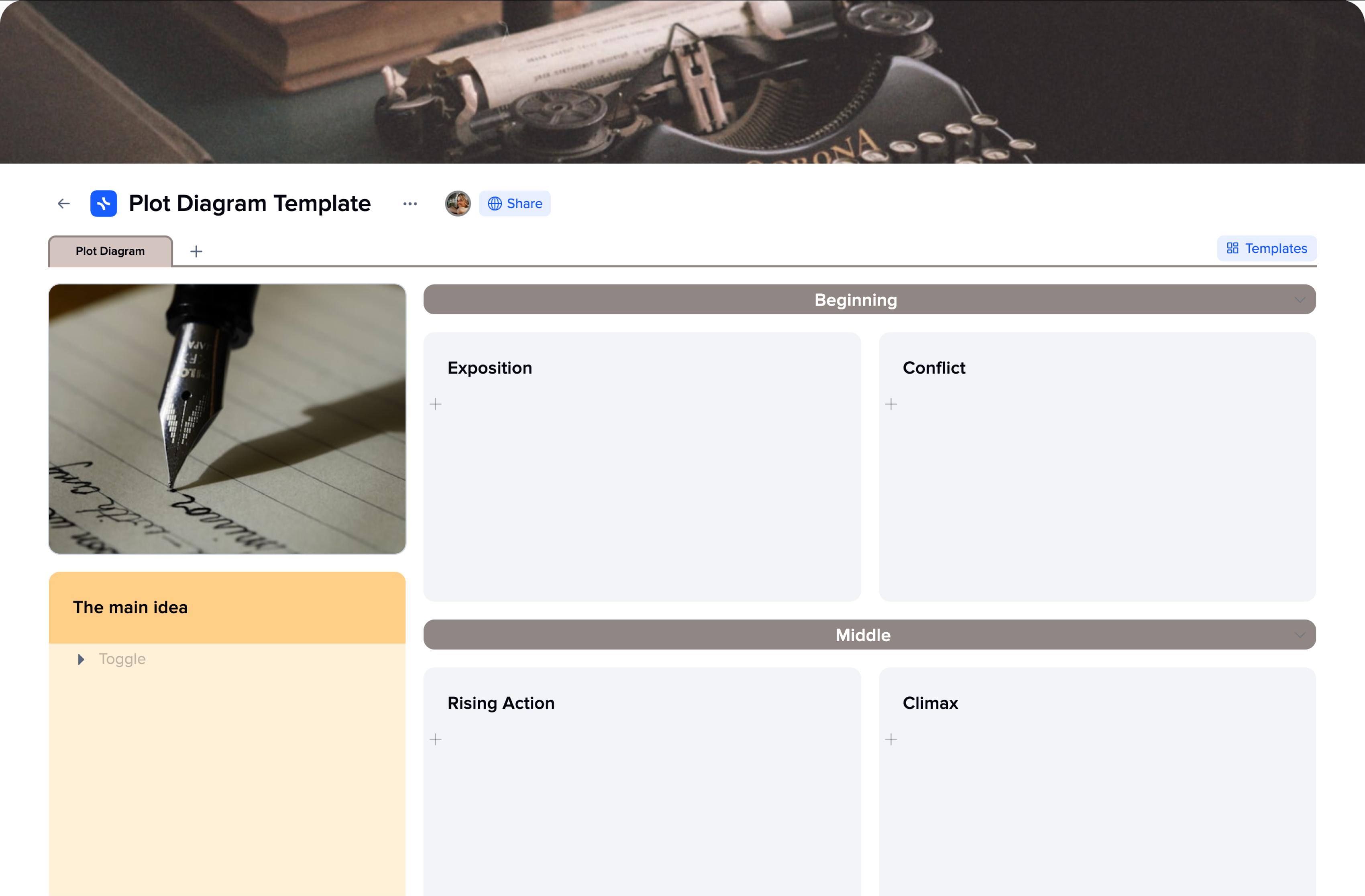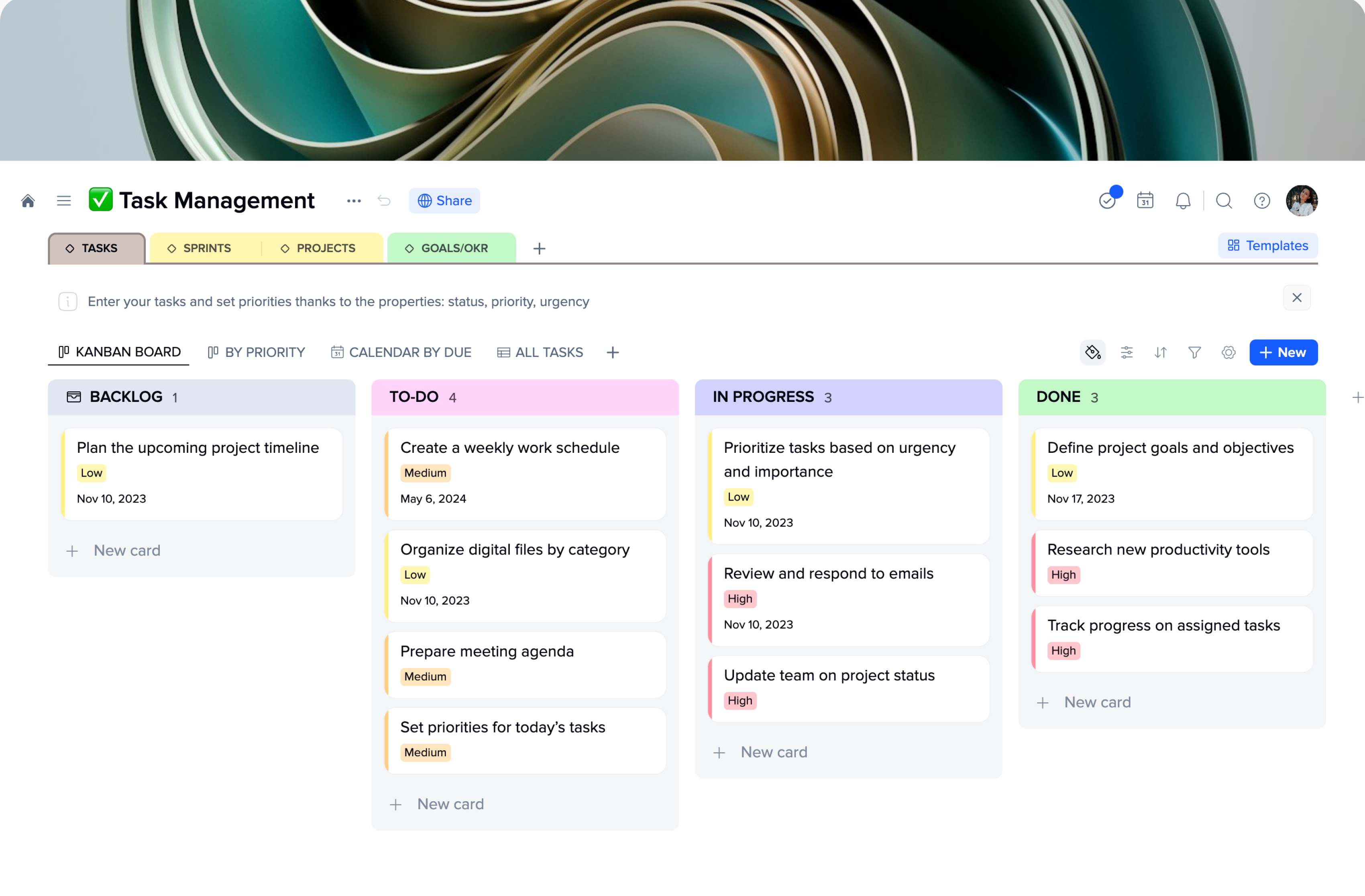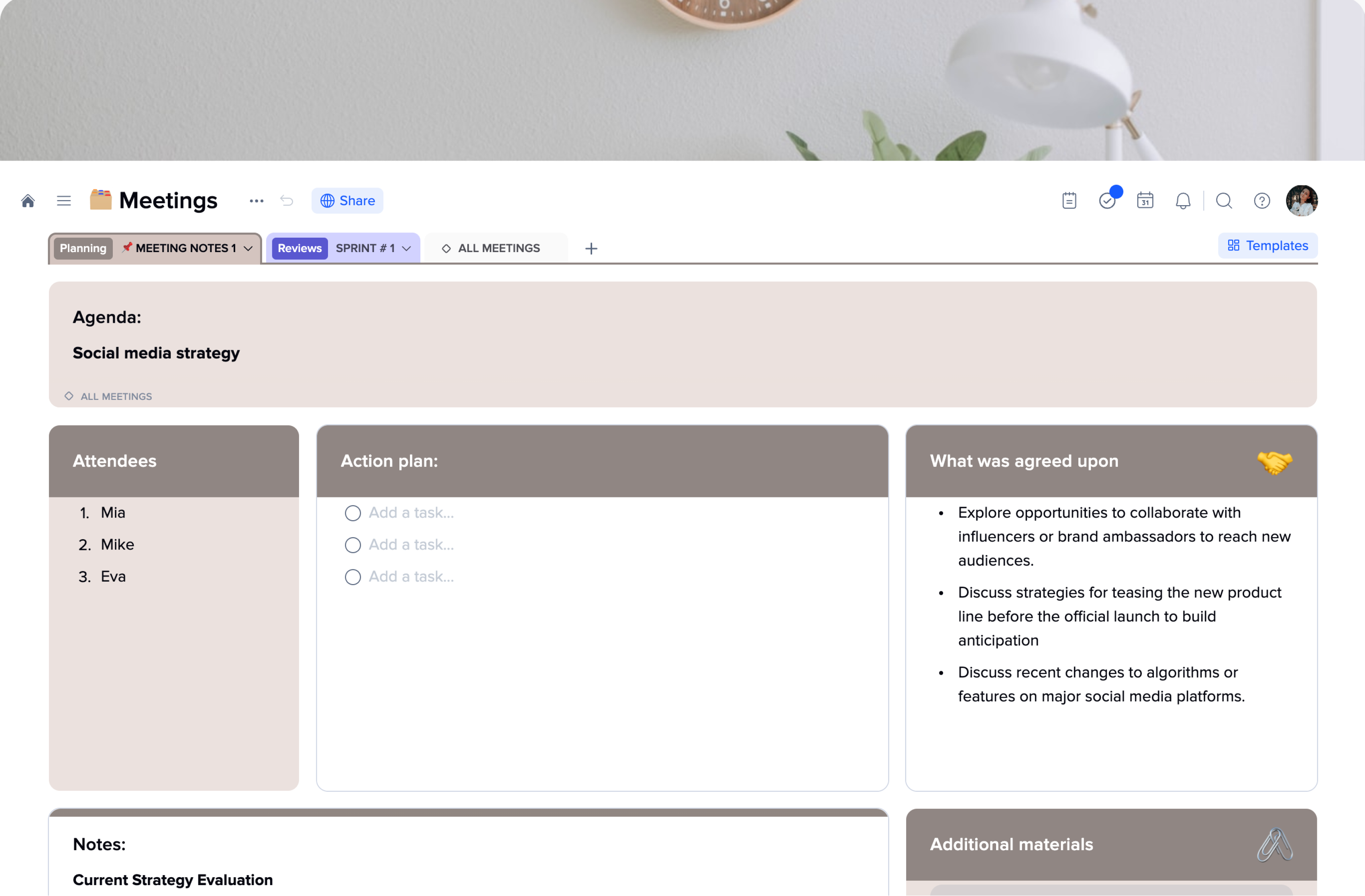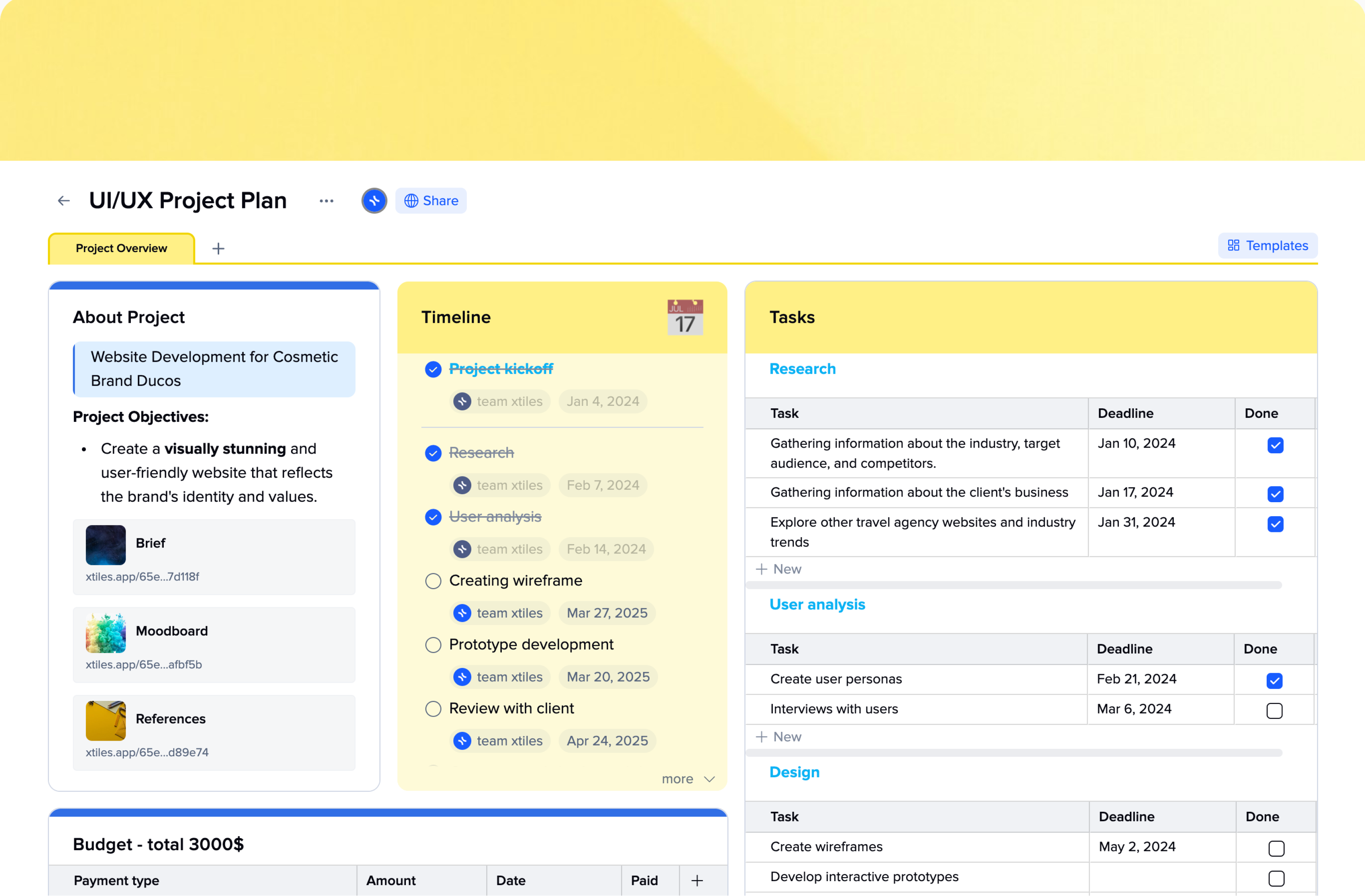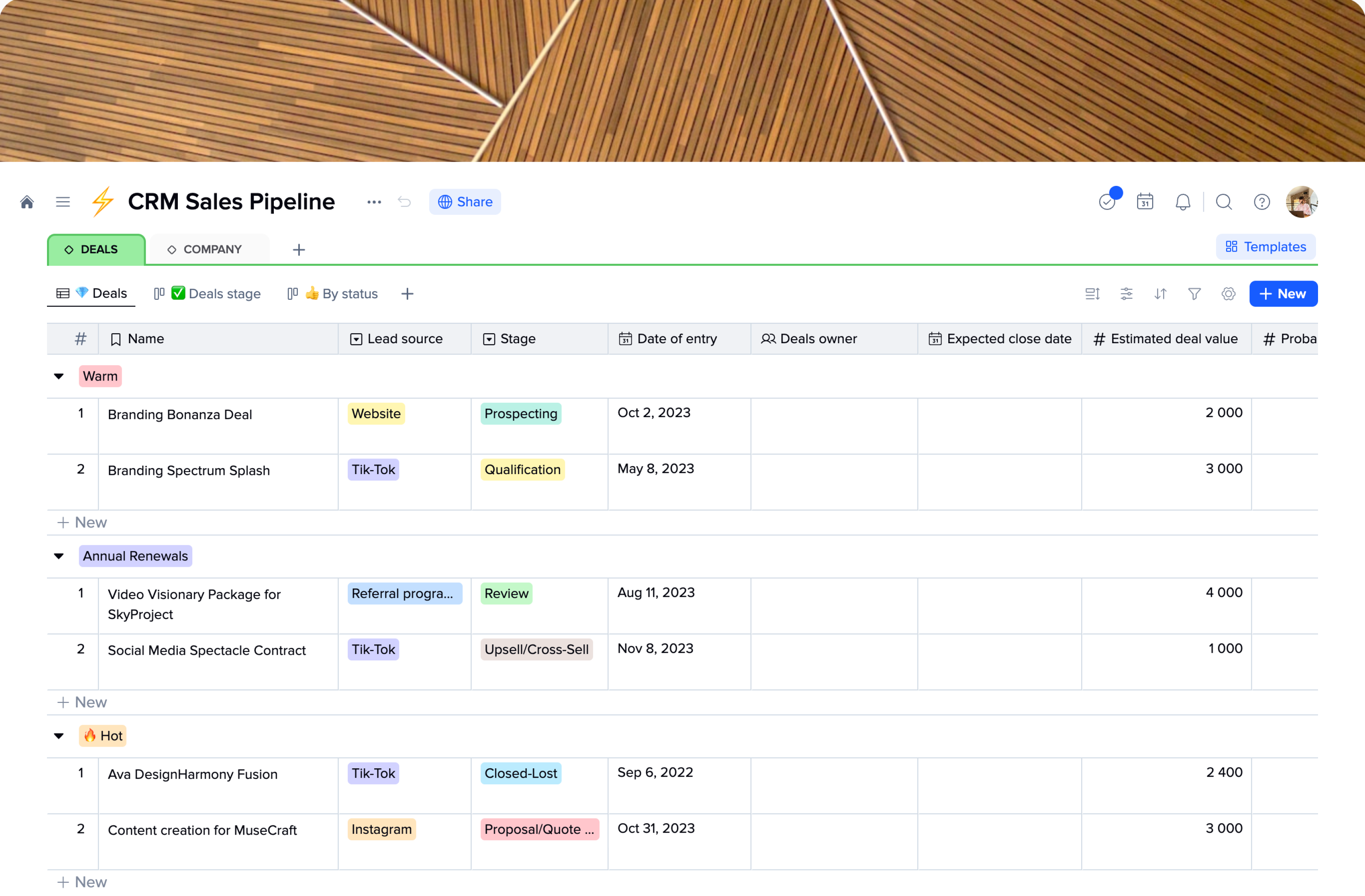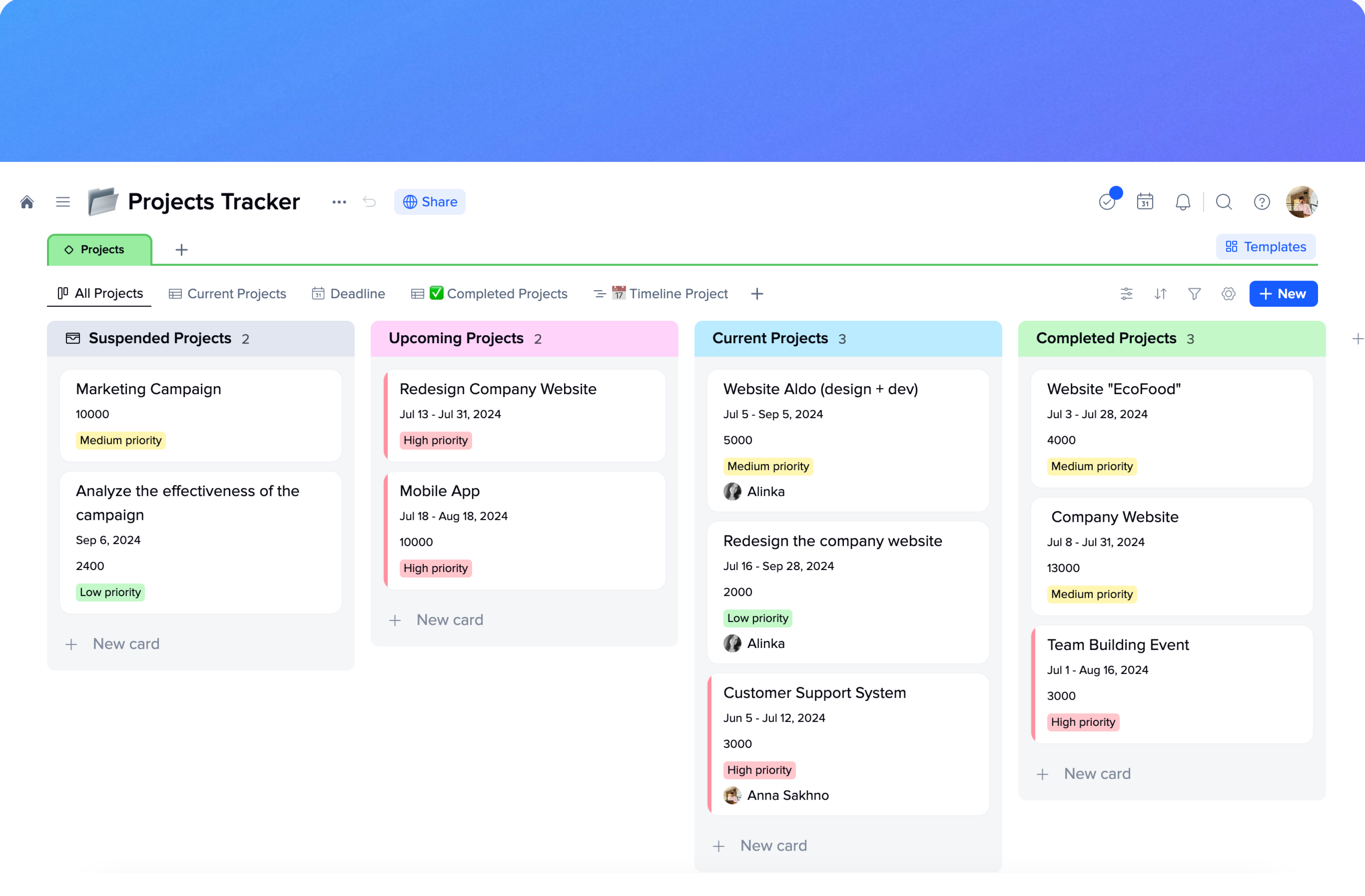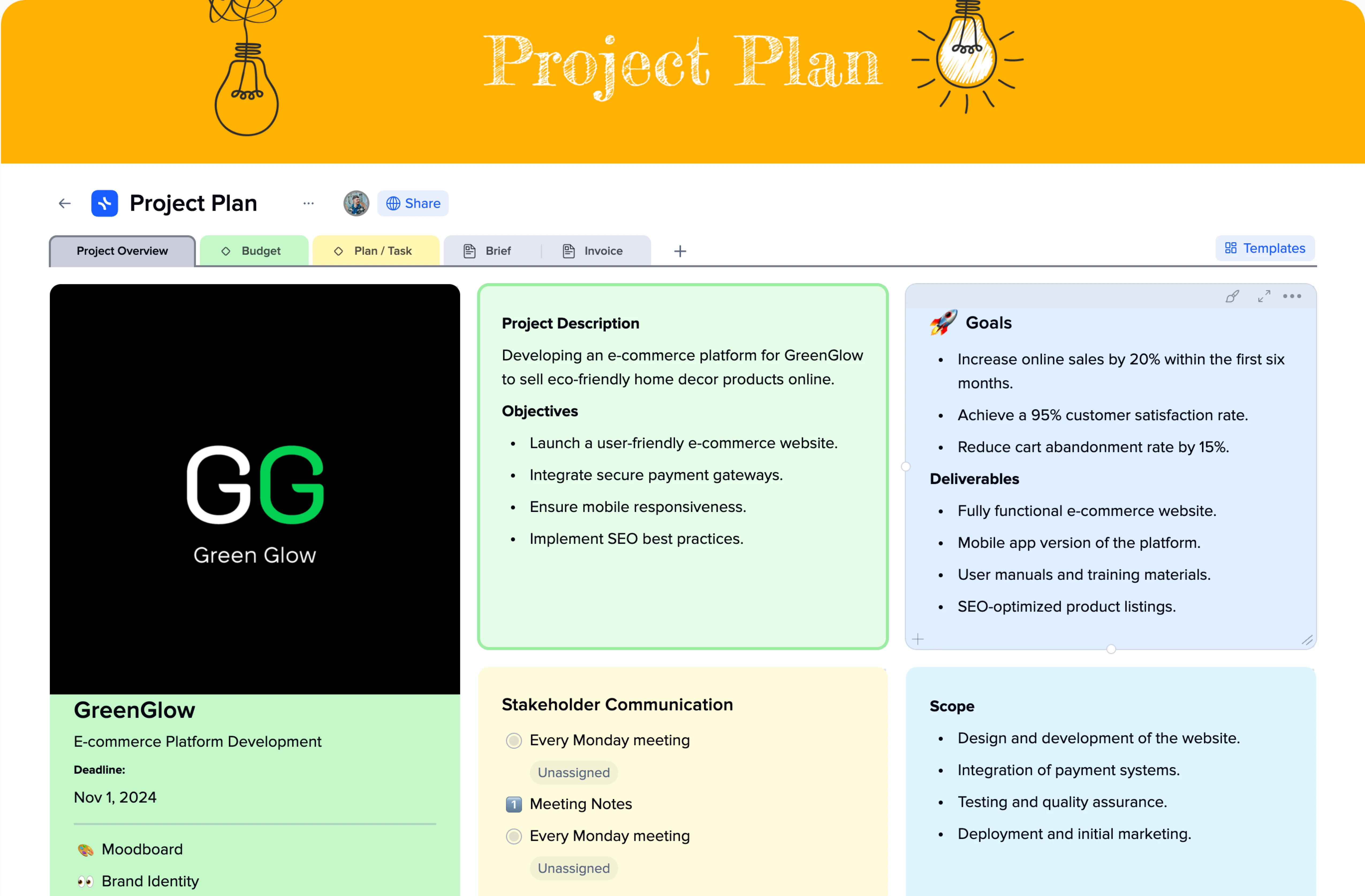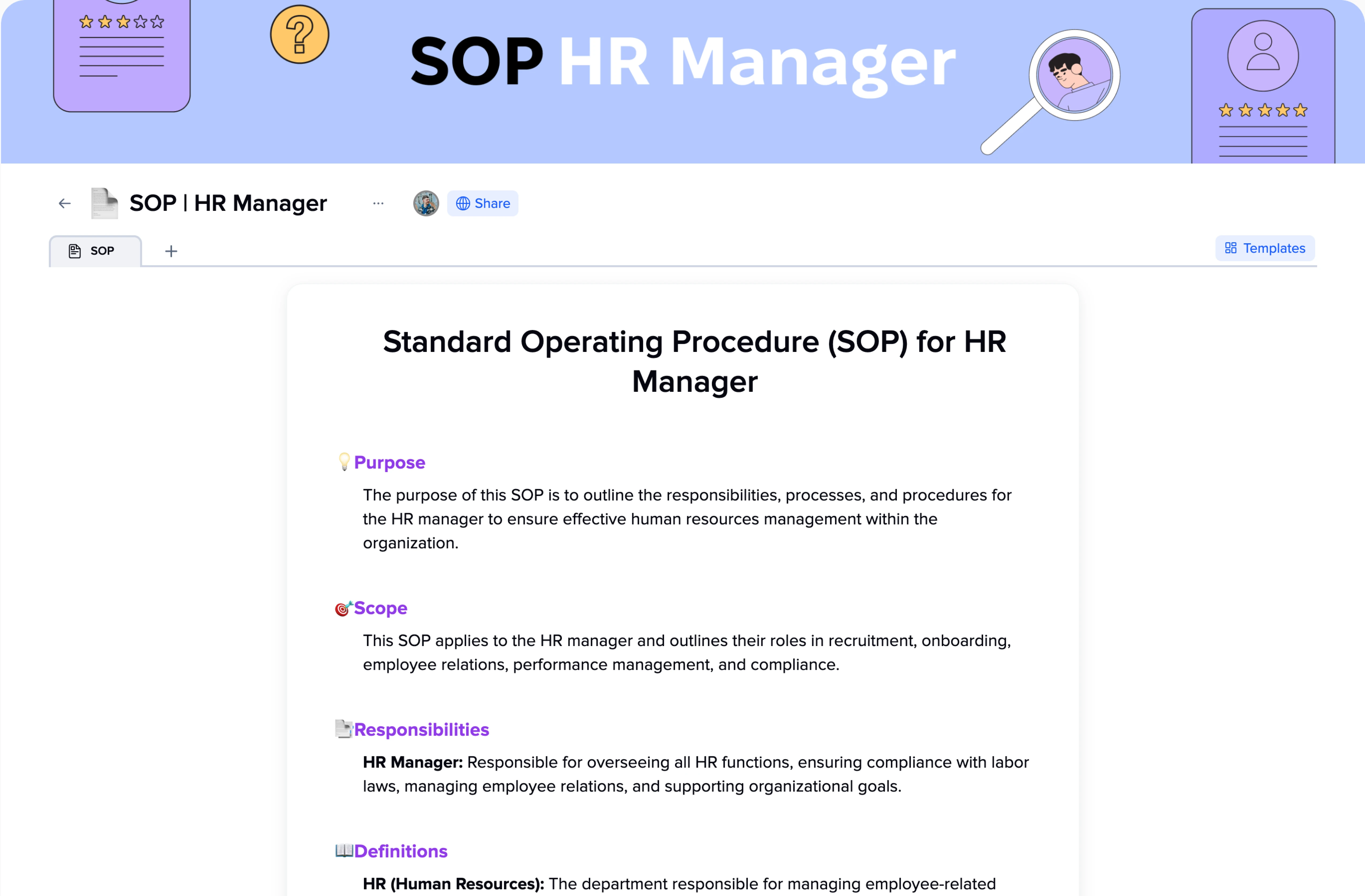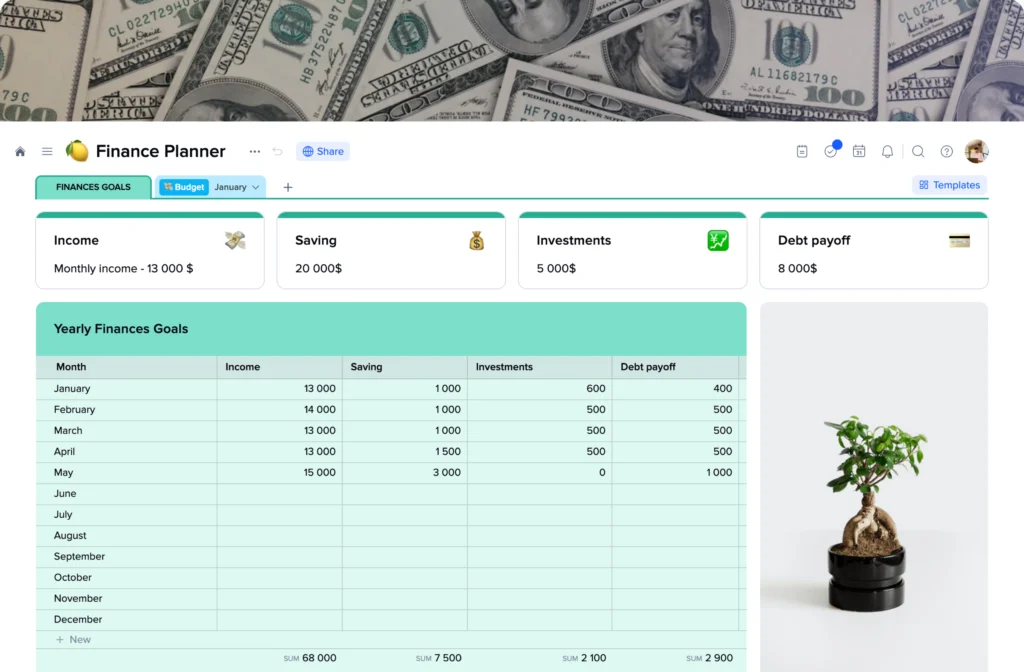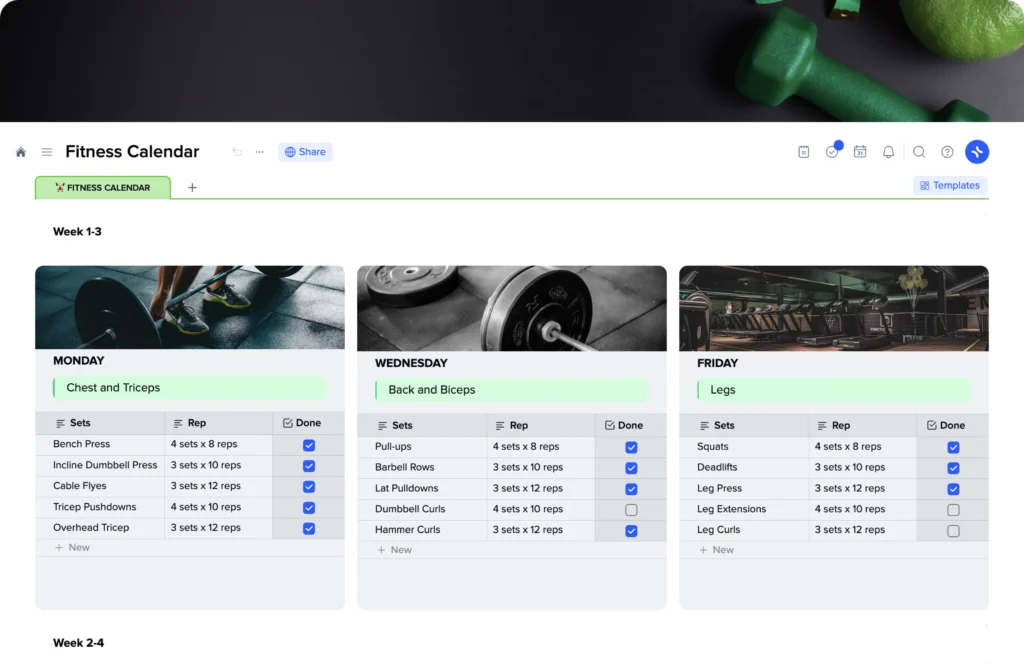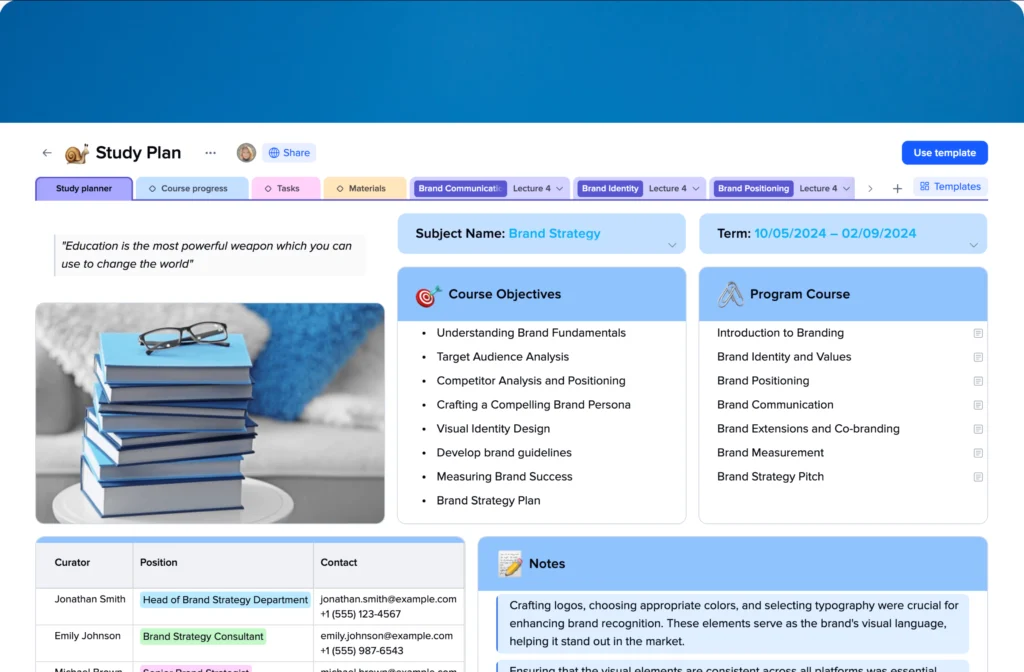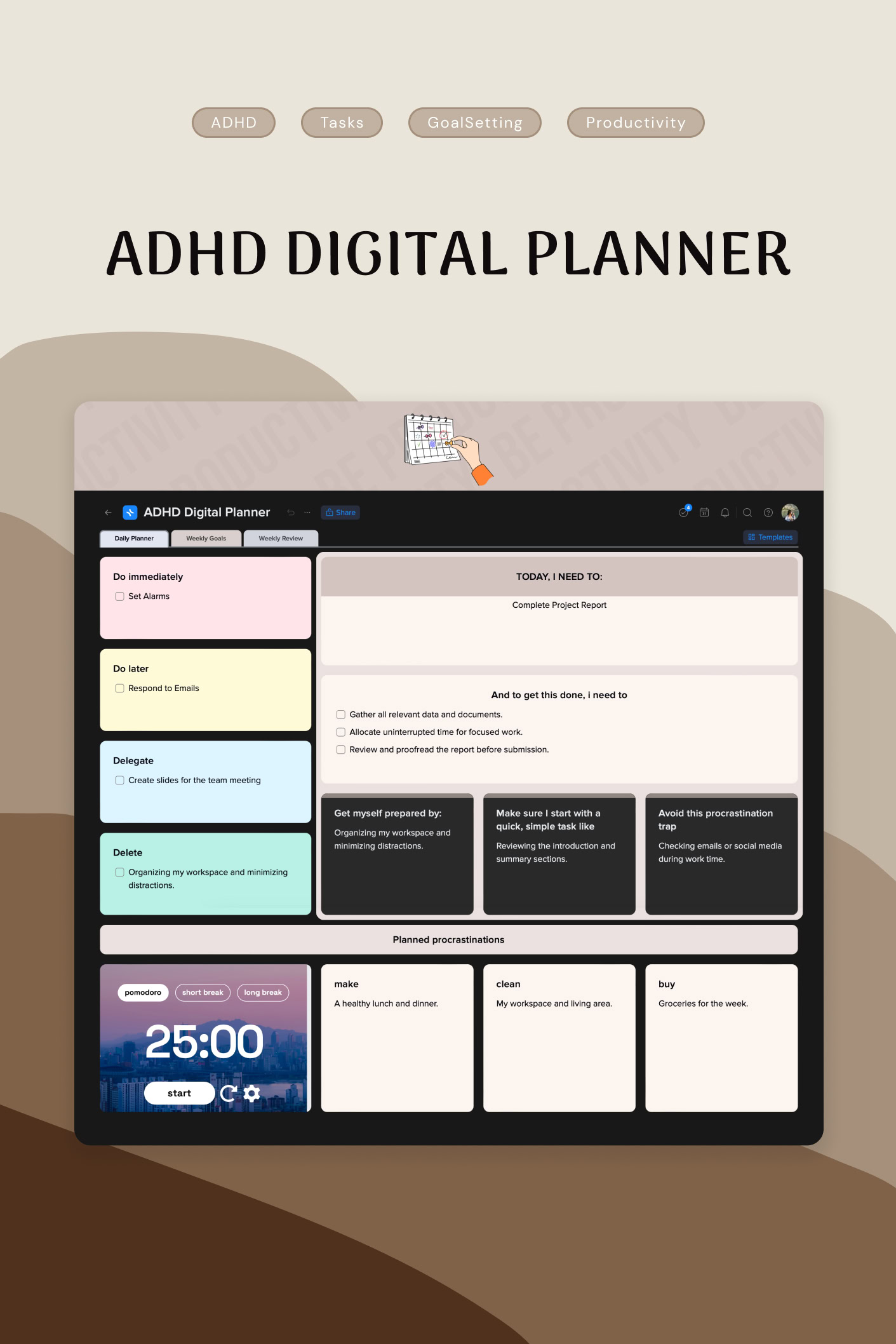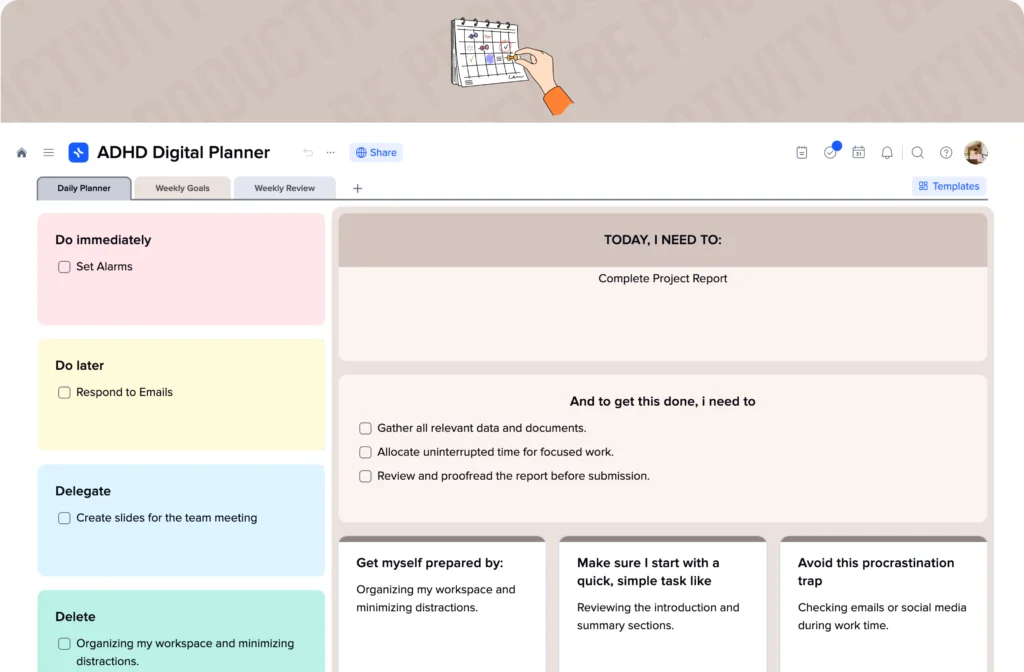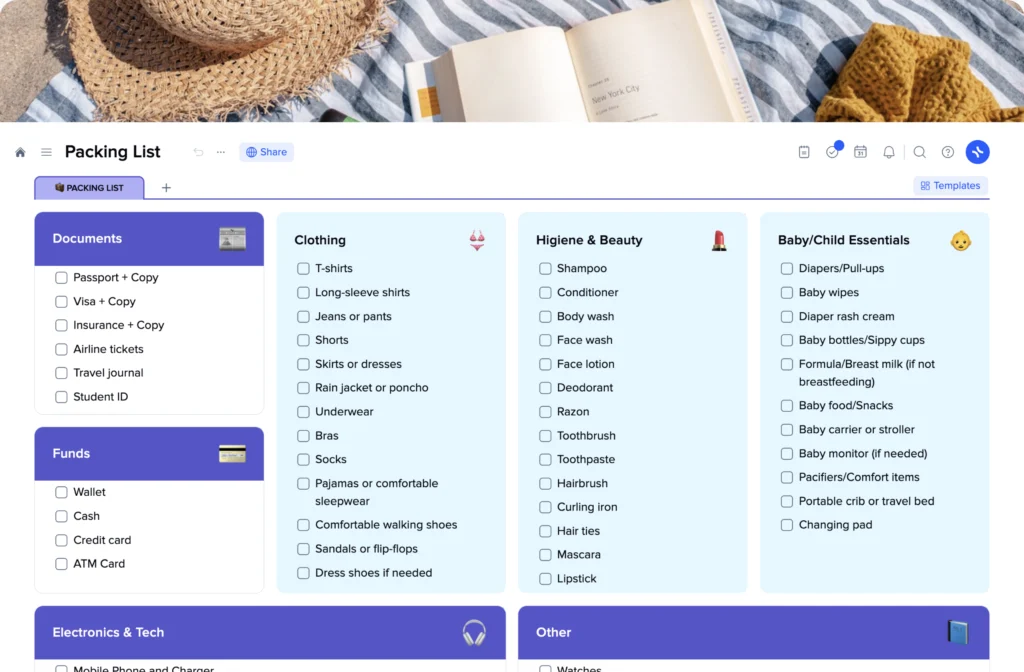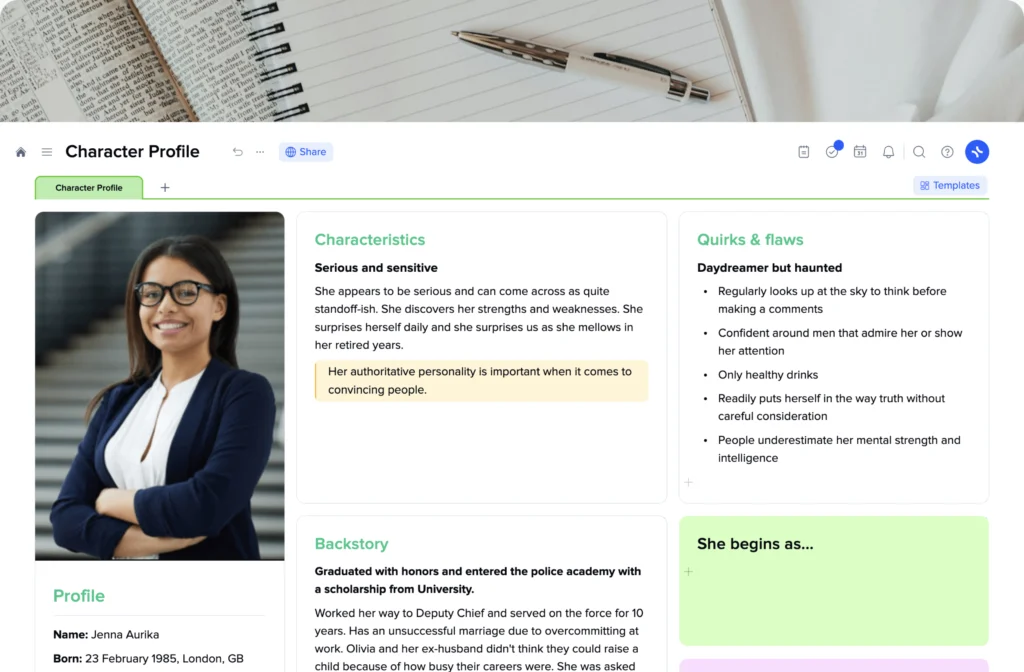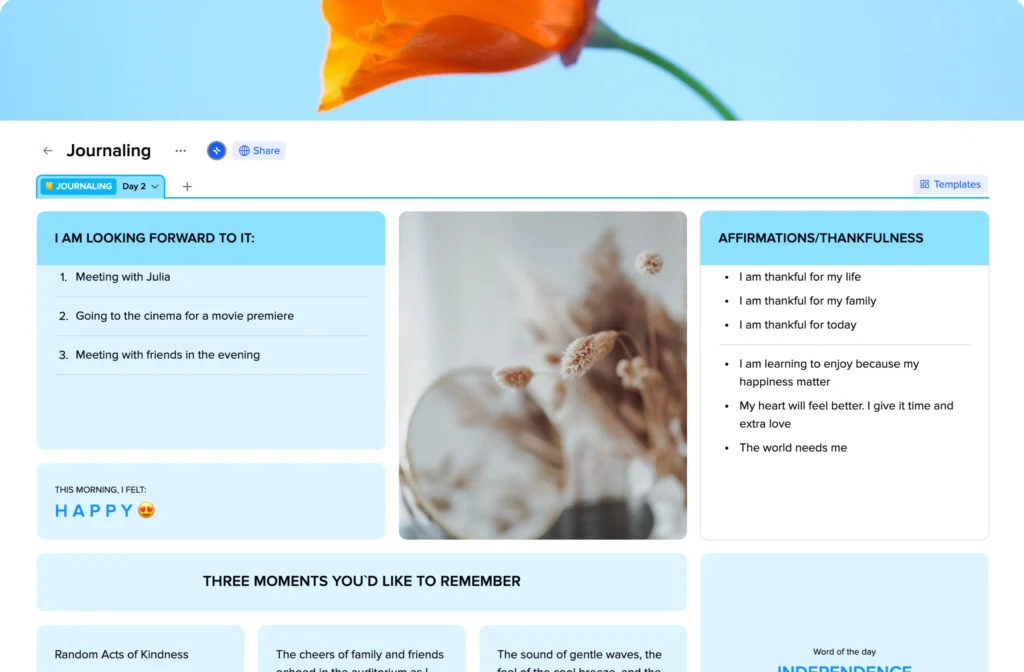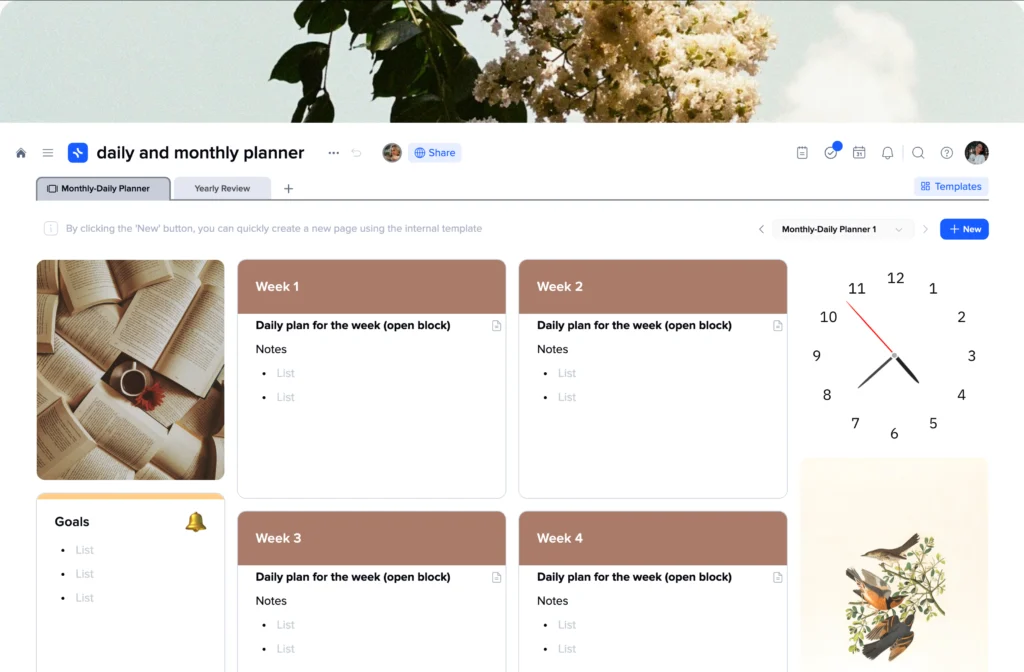📌 Novel Plan Template
A free novel plan template is suitable for authors just thinking about creating their own books. Here you can collect scattered ideas, describe the characters, brainstorm, and set the mood with the appropriate mood board.
A novel planning template will help you with your plot structure, hero’s journey, main characters, protagonist motivation, synopsis, etc., whether you’re a novice writer or a tough skilled author. Your ideas, suggestions, doubts, and interesting facts need a place to be organized for organic implementation into your story.
Pre-designed templates for writers can be of different kinds. Besides traditional novel plan templates that are one-size-fits-all solutions, writers can also use a hero’s journey template, character profile template, or three-act structure template.
You may decide on using all of them at the same time (which is a good idea if you’re working on a big text) or the one that is universal and helps to overcome main issues while you’re first mapping out the story outline and then developing it step by step.
Writing is an ongoing process of trial and error. You write, you delete, you write again, you edit, you delete, and so on until you get an entire novel you are proud of and ready to present to the world. The path between “beginning writing” and being “originally published” sometimes takes years of polishing, but don’t let this fact scare you. Writing is also about joy, not necessarily success.
Crafting exceptional stories requires substantial effort and life experiences. As you embark on your storytelling journey, be prepared for the possibility that it may prove more challenging than anticipated and sometimes inspiration strikes not so often as you would imagine. However, modern writers have many tools at their disposal to make the process of writing more convenient, satisfying, and faster.
While story novel plan templates do not solve all the challenges writers encounter because there are always new ones that depend on working style, writing style, new tendencies in the industry, etc., they significantly mitigate the impact these challenges might have on the writing process. These templates assist in organizing your thoughts, providing structure, and offering long-term benefits for your writing endeavors.
The xTiles Novel Plan Template is a solid foundation for various writing styles and story types, regardless of the genre you’re pursuing, be it a sci-fi thriller or historical fiction. Moreover, it is highly customizable and does not restrict you from implementing your most imaginative writing ideas.
What is a novel plan?
A novel plan serves as a fundamental blueprint for a future story, mapping out the major events, plot points, and character development process that will unfold. Authors often incorporate characters, settings, and key elements into the plan to gain clarity and analyze the story to avoid misconceptions, mistakes, and dead ends.
The level of detail in a novel plan can vary based on the writer’s preference and the novel itself. The more characters, settings, and longer timelines you have, the bigger your plan needs to be to keep everything in order within the text.
Neglecting a story outline (even if you’re working on a short story) can lead to confusion and mistakes in the final text, even involving editors or proofreaders might not help. Even successful writers can sometimes overlook inconsistencies, resulting in published texts with errors.


